

James Wong
2026 Audi Q5 review: Quick drive
5 Days Ago
A seven-seat SUV based on the Toyota HiLux should be a knockout success, but the Fortuner has struggled to cut through in Australia. Why?
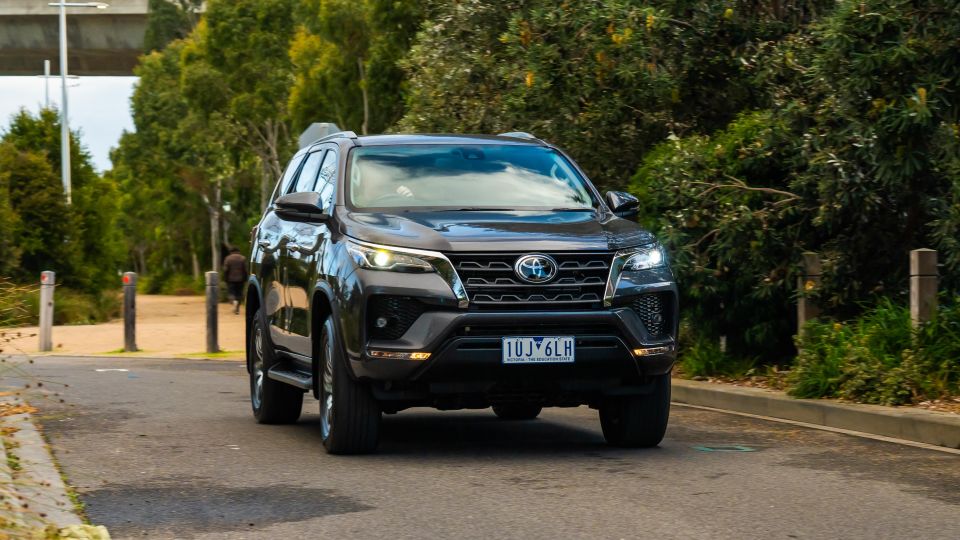
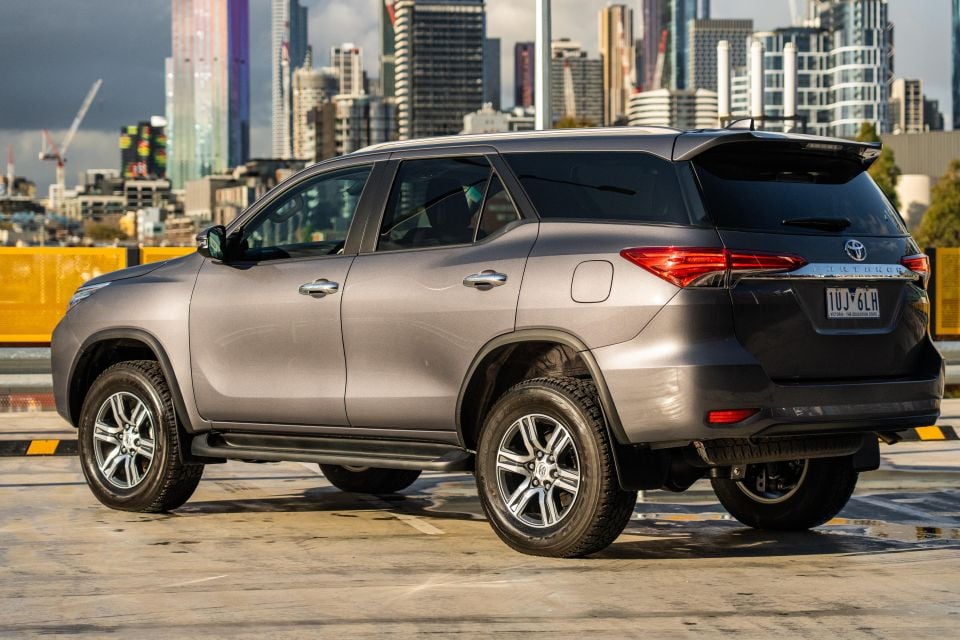

Quickly see how this car stacks up against its competition. Select any benchmark to see more details.
Where expert car reviews meet expert car buying – CarExpert gives you trusted advice, personalised service and real savings on your next new car.
The Toyota Fortuner should, on paper, be a segment stalwart.
After all, it’s based on the same underpinnings as the all-conquering HiLux ute, and Toyota Australia has a near-perfect strike rate when it comes to introducing new names to Australia.
Unusually though, the Fortuner hasn’t really been a sales success. It’s consistently outdone by the Isuzu MU-X and Mitsubishi Pajero Sport on the sales charts, even after a mid-life facelift and a power boost.

Built on the same rugged, ladder-frame bones as its ute sibling, the Fortuner features a more comfort-oriented coil spring suspension setup, more luxurious interior, more seats… and no tray, of course.
It’s aimed at people who want to take their family into the wilderness, to places a more road-oriented seven-seater won’t go.
Why has the Fortuner struggled to make an impact in Australia?
The Fortuner GXL on test has a sticker price of $55,085 before on-road costs, although opting for the Luxury Pack (leather seats, powered front seats) adds $2500 to the sticker price for an as-tested sticker of $57,635 before on-roads.
The range kicks off at $49,715 before on-roads for the GX, and extends to $62,945 before on-roads for the evocatively-named Crusade. Toyota doesn’t offer two-wheel drive variants, nor a manual anymore.
The GXL is priced between the Isuzu MU-X LS-M 4×4 ($54,900) and LS-U ($61,400), and intersects the Mitsubishi Pajero Sport GLS ($54,190) and Exceed ($59,690) 4WD models.
The entry-level, five-seat Ford Everest 4×2 Ambiente ($57,990) is a near perfect match based on price.
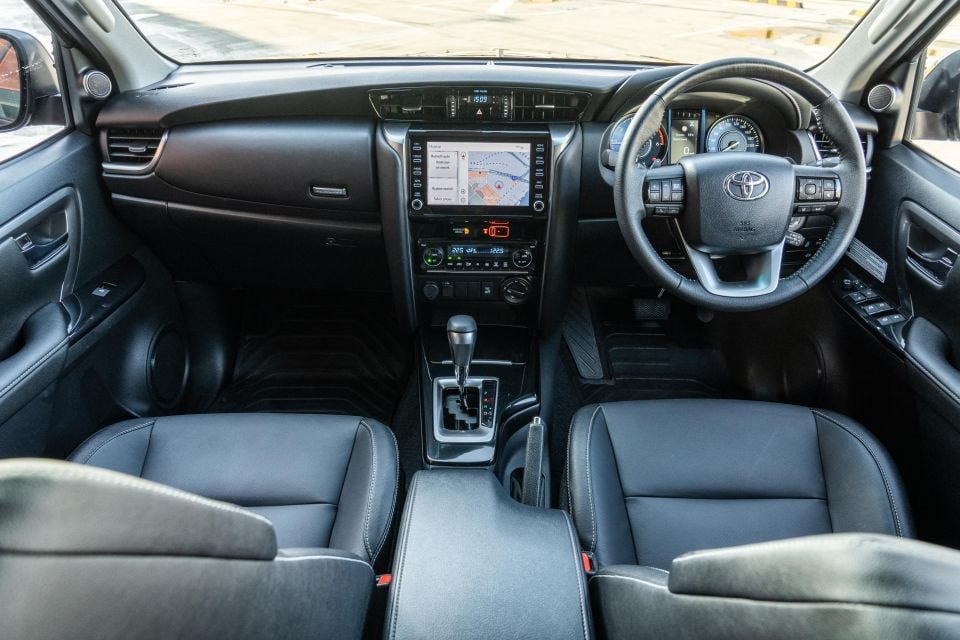
Buy your new car without the stress. It's fast, simple and completely free.

Great service from Travis and team, second time I have used this business would not hesitate to recommend them to anyone
Craig C.
Purchased a Ford Ranger in Sunshine Coast, QLD
CarExpert helped Craig save $7,224 on his Ford Ranger, now let us save you on your next new car.
Get your BEST priceThe Fortuner is, at first glance, a pretty luxurious take on the rugged SUV formula.
With leather trim on the seats and steering wheel, a leather-like padded cover for the top glovebox, and plenty of gloss black, it’s flashier than you might expect of a HiLux-based off-roader.
In reality, the flashiness isn’t backed with the substance you’d hope. The driving position is poor for tall drivers – at six-seven, I need to lever my legs under the wheel and sit with them awkwardly splayed – and some of the touch points feel downright nasty.
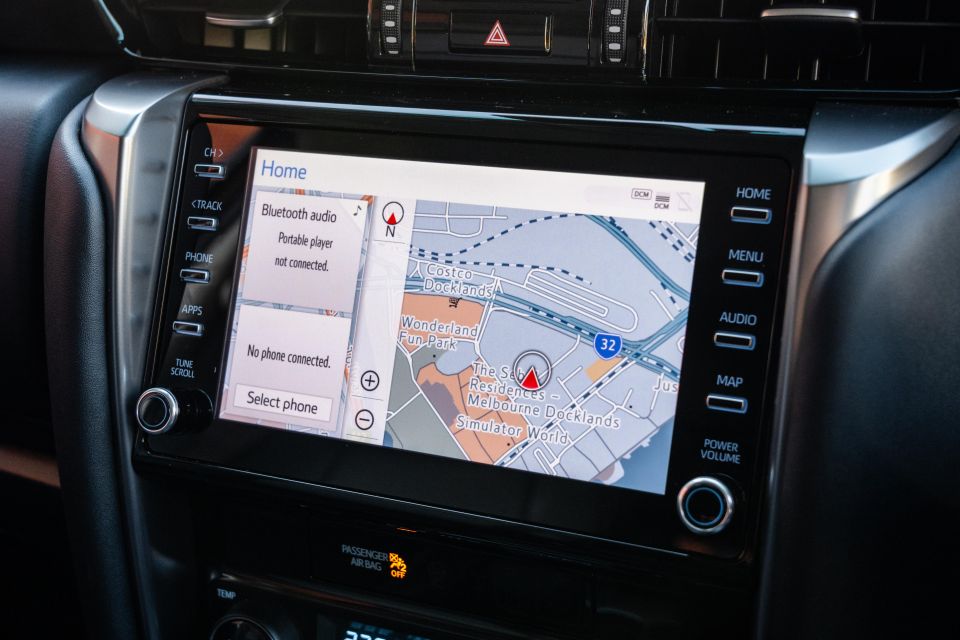
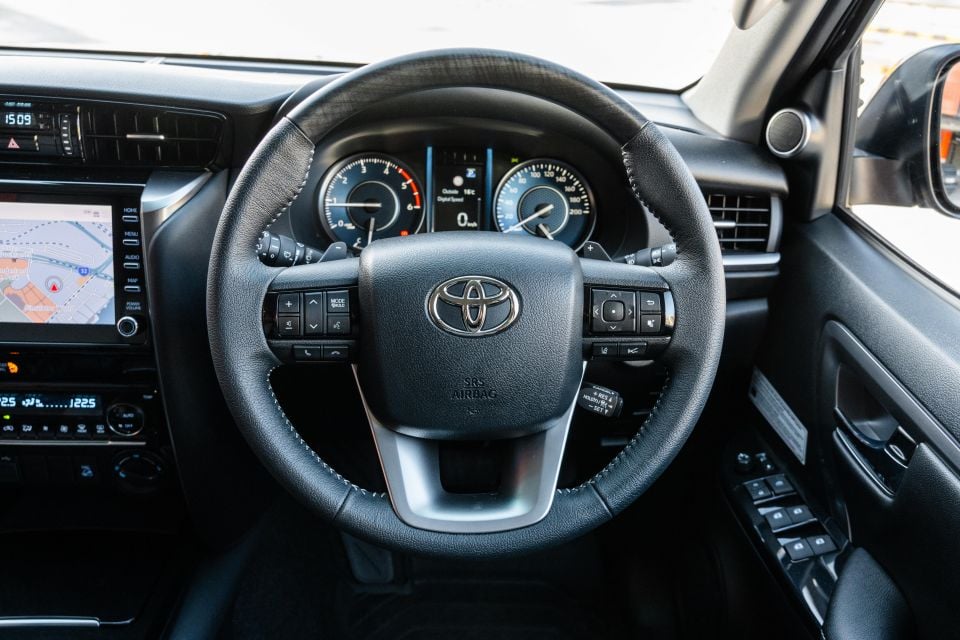

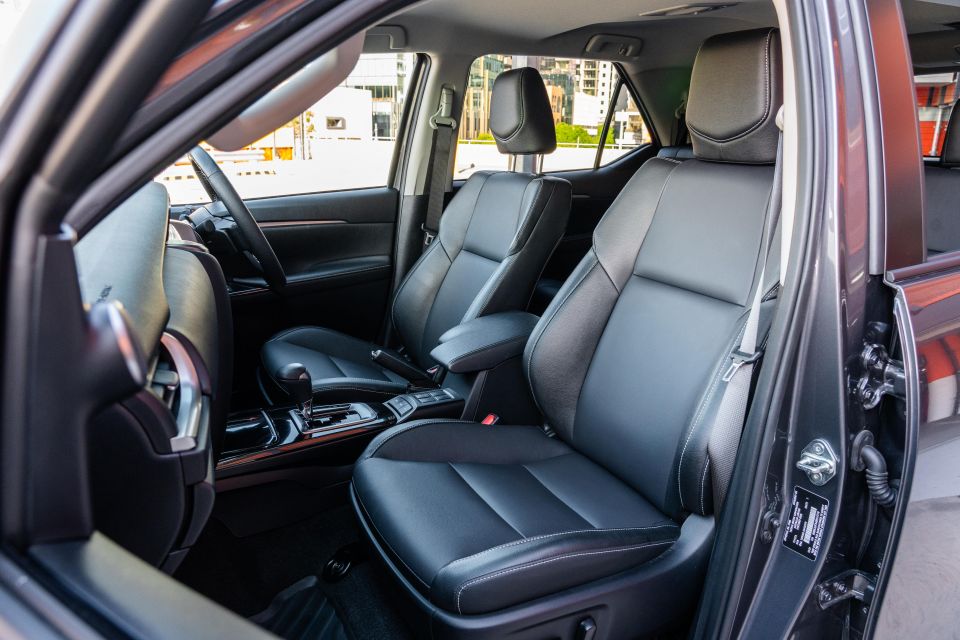
The central armrest is rock hard, the handbrake is trimmed in brittle plastic, and the chunky steering wheel doesn’t actually feel particularly flash in your hands.
Why Toyota has trimmed the glovebox lid in plush leatherette, but left the armrest uncomfortably solid, remains a mystery.
Infotainment is a Toyota weak spot, and it remains that way here. The 8.0-inch screen in the Fortuner is slow to boot up and laggy in day-to-day use. Apple CarPlay is its saving grace, although you’ll still need to plug in.
The driver is faced with simple, legible analogue dials between which sits a colour trip computer capable of showing your speed, media, or trip data.
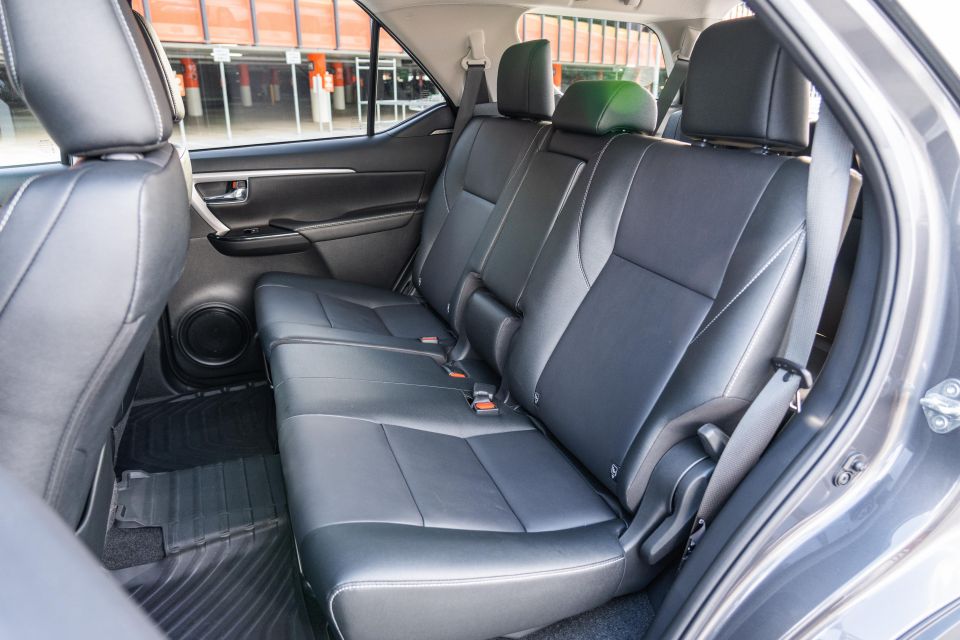
Storage up front is fine, but nothing more. The cupholders are nestled beneath the centre console beneath a flip-up lid, and there’s an open space that would be the perfect slot for a wireless charger… but instead is just a neat place to put your phone.
The dual-tier glovebox has plenty of space, and the underarm bin has room for a family’s worth of road trip snacks.
Rear seat space is fine, but nothing more. There’s marginally less legroom than is offered in rivals such as the MU-X, and headroom is on par for the class.
The Fortuner has roof-mounted air vents, but it lacks USB ports. Instead, it features a less useful 240V plug.
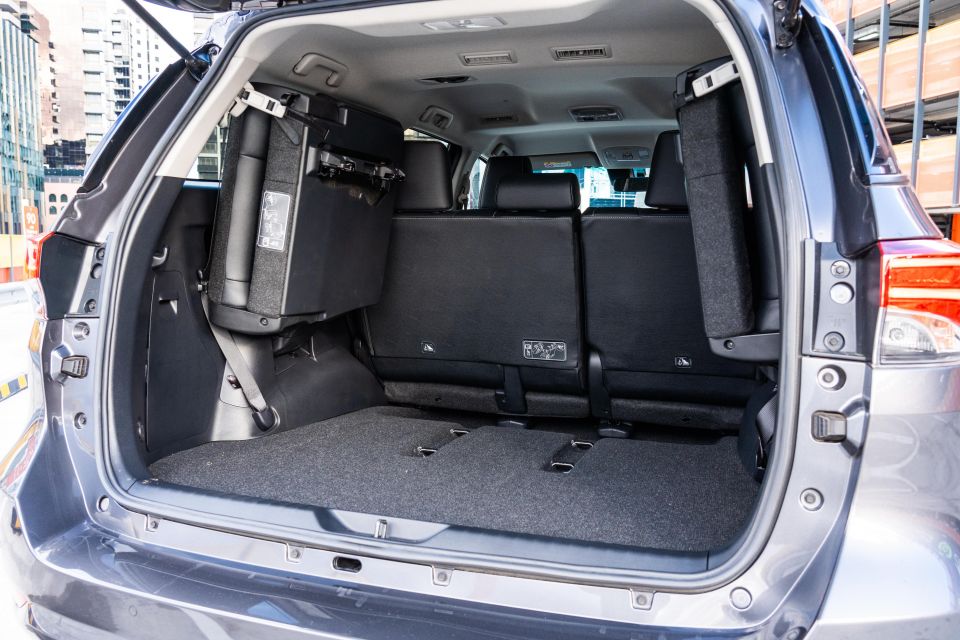
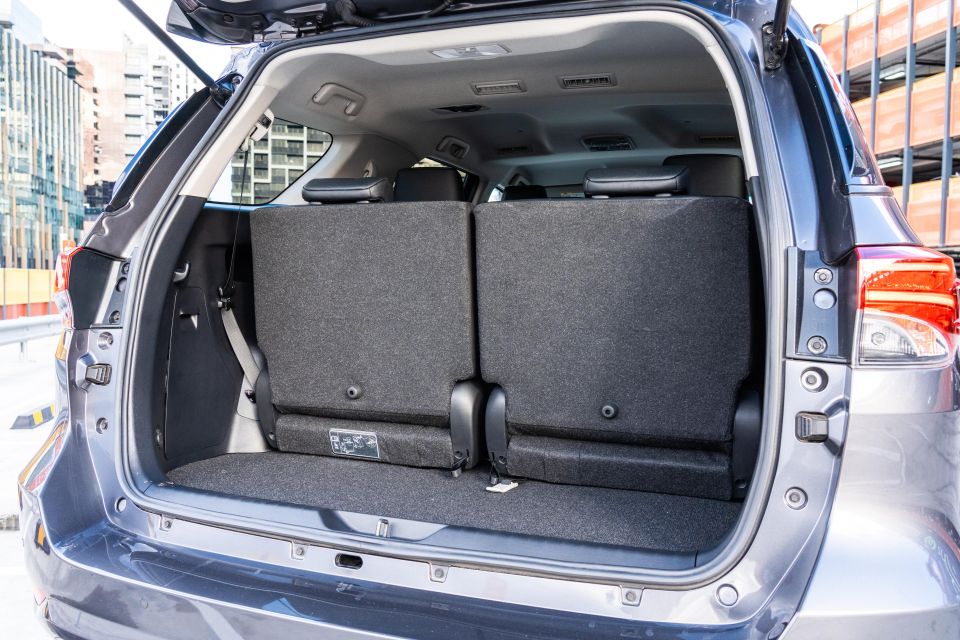
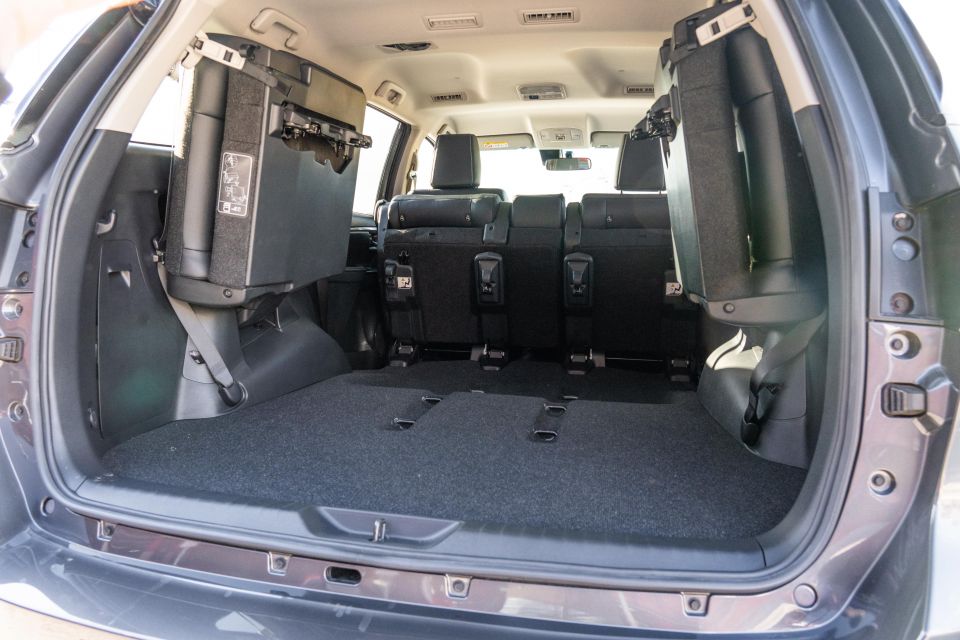
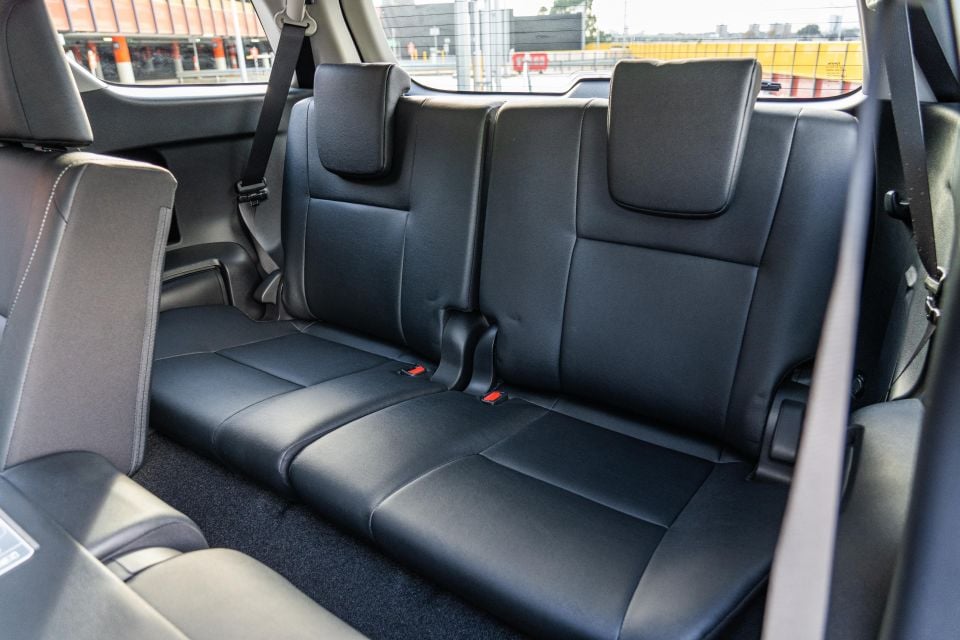
Although the rear bench slides, access to the third row is tighter than in some rivals. With the driver’s seat set for a taller adult, the opening through which kids need to climb to access the third row is quite tight, and the seats are more suited to young kids.
Although there are air vents back there, you don’t get cupholders or device power. Then there’s the fact Toyota hasn’t engineered the third row in the Fortuner to fold into the floor.
Instead, you need to clip them to the side of the load bay, which limits visibility and boot space, and means they squeak over rough roads. They can be removed entirely, but it’s a laborious process. The boot lid is also manual.
Toyota doesn’t quote a claimed boot capacity for the Fortuner, but independent figures quote 200L with the third row in use, 716L with the third row folded, and 1080L with the second row folded.
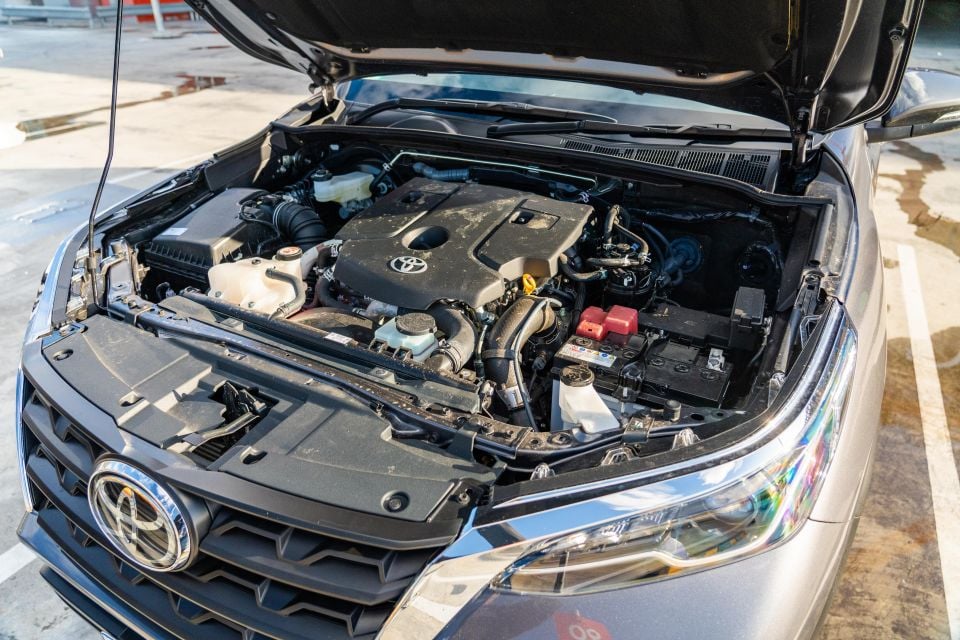
The Toyota Fortuner is powered by the same 2.8-litre turbo-diesel four-cylinder engine as the HiLux ute, with 150kW of power and 500Nm of torque.
It comes with a six-speed automatic transmission and switchable four-wheel drive, including low range and a locking rear differential.
Claimed fuel economy is 7.6L/100km on the ADR combined city and highway cycle, and the Fortuner has an 80L fuel tank. We saw 8.2L/100km on a mixed loop.
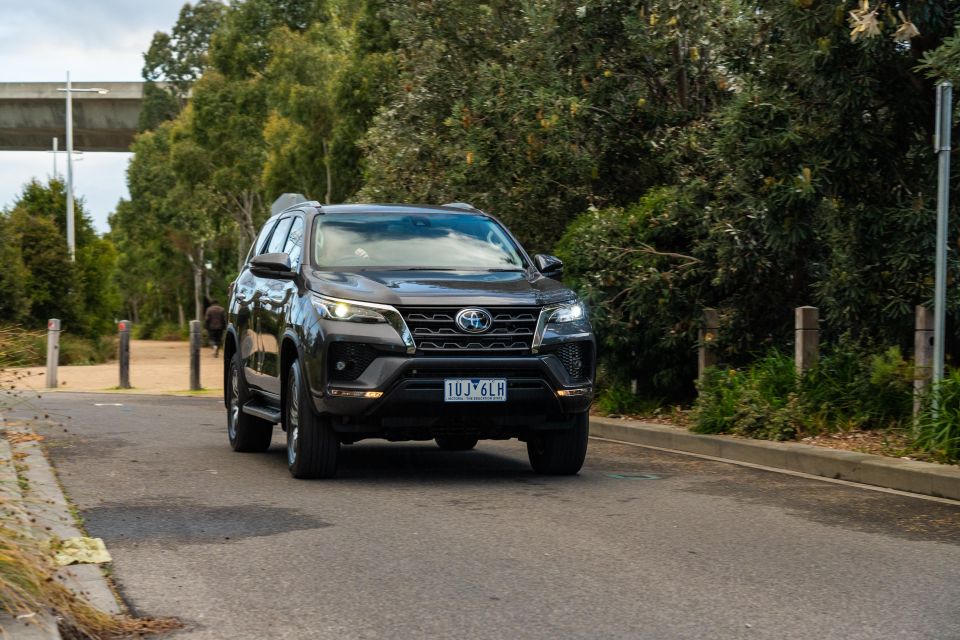
The Fortuner is based on the HiLux ute, and it shows.
Even after a recent update the HiLux is one of the more rugged dual-cab utes out there, and that doesn’t translate well to a seven-seat family SUV.
With heavy steering at low speed and a noticeable diesel clatter on startup, it feels very truck-like from the moment you get rolling. None of its rivals can completely hide their agricultural roots, but newer options do a better job than the Toyota.
Navigating tight underground carparks requires more arm-twirling and bigger biceps than is ideal. The Fortuner just feels cumbersome in tight spaces, despite actually being the smaller than some of its rivals – and despite Toyota making the steering lighter with a mid-life refresh.

The third-row seats also cut visibility when they’re folded into the side of the load space, and the lack of blind-spot monitoring is disappointing in 2022. Toyota offers them on the Crusade, but has skimped here.
The reversing camera is also low-resolution, and a surround-view camera would make placing the car and its considerable front overhang much easier.
What the Fortuner does have is grunt, and plenty of it. Toyota boosted the 2.8-litre turbo-diesel engine along with its styling in 2020, upping power to 150kW and torque to 500Nm, and it shows in the real world.
Lean on the accelerator and the Fortuner surges forward more determinedly than before when you’re in the mid-range, and the six-speed automatic can hold a taller gear instead of shifting down when you need to get a move on.
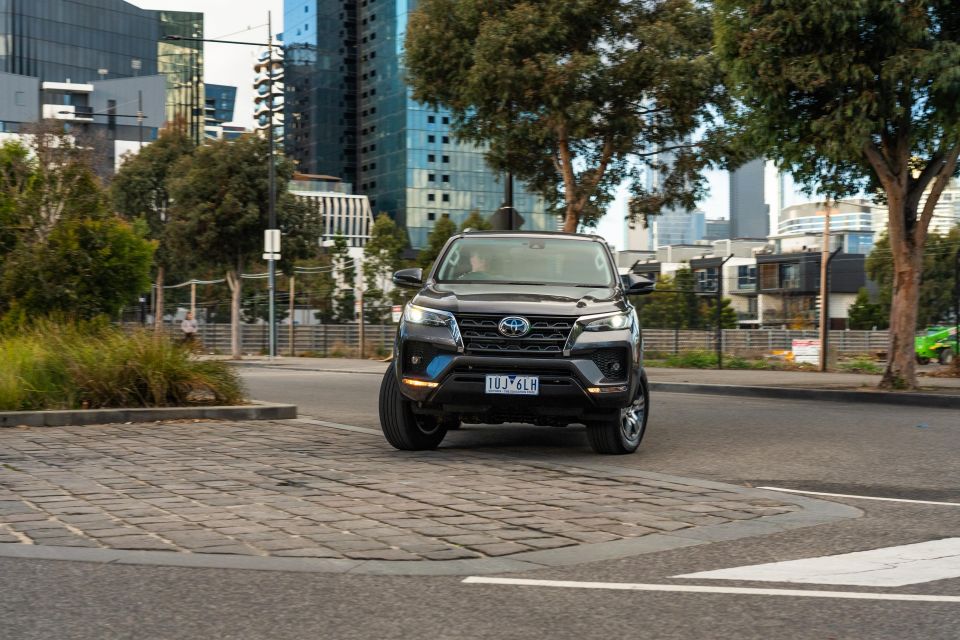
It feels confident and settled on the move, something that only becomes more relevant as you add passengers, luggage, or a trailer.
At highway speeds, the clattery diesel engine settles down nicely and the rear suspension in the Fortuner lends it a settled ride.
It still has the slightly busy, jiggly feel common in ute-based SUVs with only the driver on board, but it isn’t quite as busy at the rear as an Isuzu MU-X.
Over washboard gravel with some potholes, there’s a reasonably soft edge to the ride. It does a decent job keeping occupants separated with what’s happening beneath them, and doesn’t get skittish.

The traction control and stability control in the Fortuner cut in reasonably smoothly on loose surfaces, and the switch between 2H, 4H, and 4L four-wheel drive modes happens swiftly. Nervous off-roaders will be pleased to know there are plenty of clear lights on the dashboard to show what’s happening under the skin.
The Fortuner feels every bit like a body-on-frame truck on roads with a significant crown, requiring a fair bit of steering to keep the front end on the straight and narrow.
Toyota’s driver assists also lack the sophistication you’d expect in 2022. The lane-keeping system is brake-based rather than steering the car back between the white lines when you stray.
For a car designed to cover long distances with precious cargo on board, it’s disappointing.

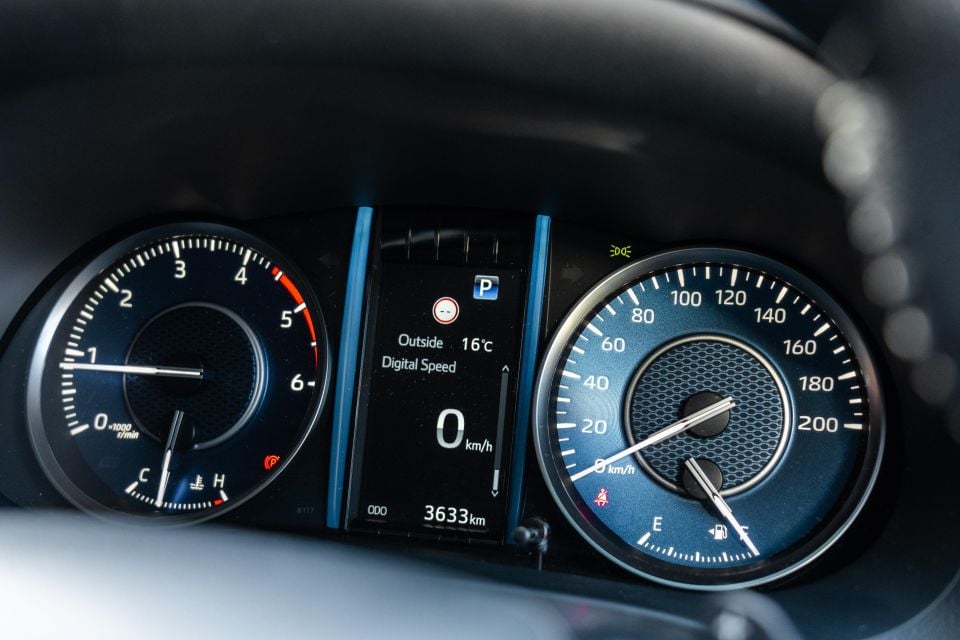


Fortuner GX highlights:
The GX can be had with DAB radio and satellite navigation ($1000).

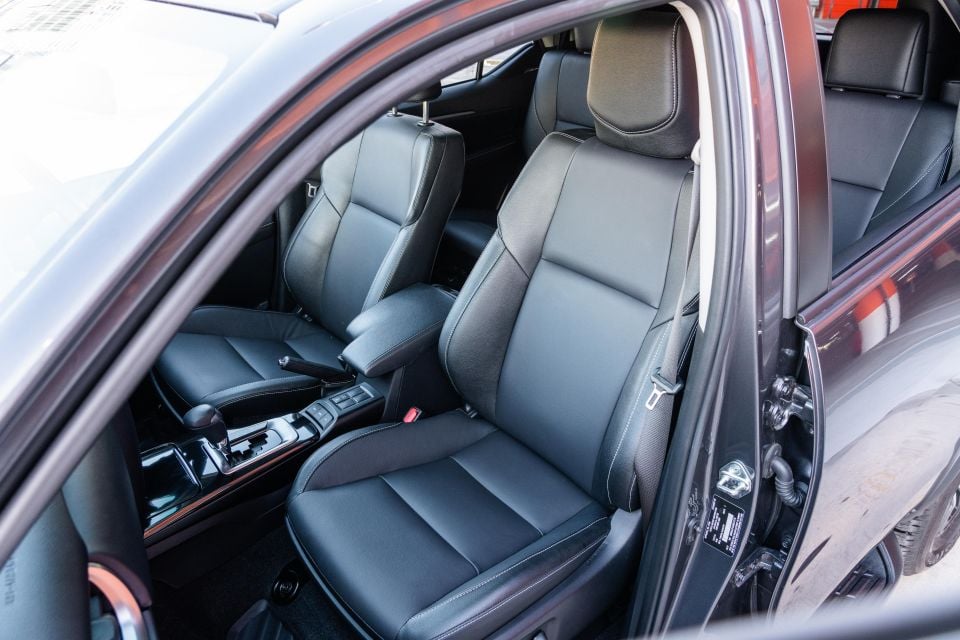
Fortuner GXL adds:
The GXL can be optioned with leather-accented, powered front seats for $2500.
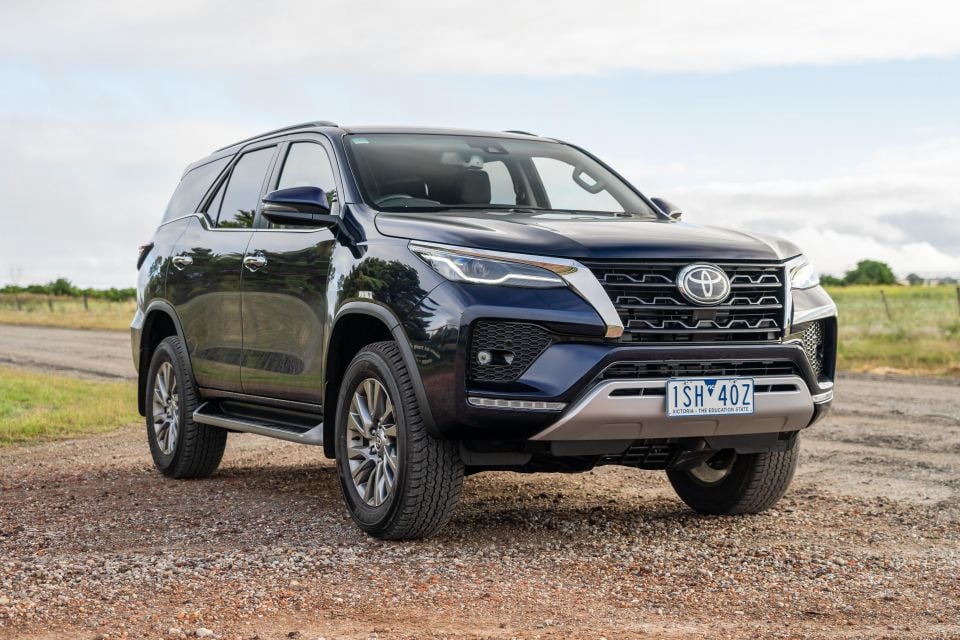
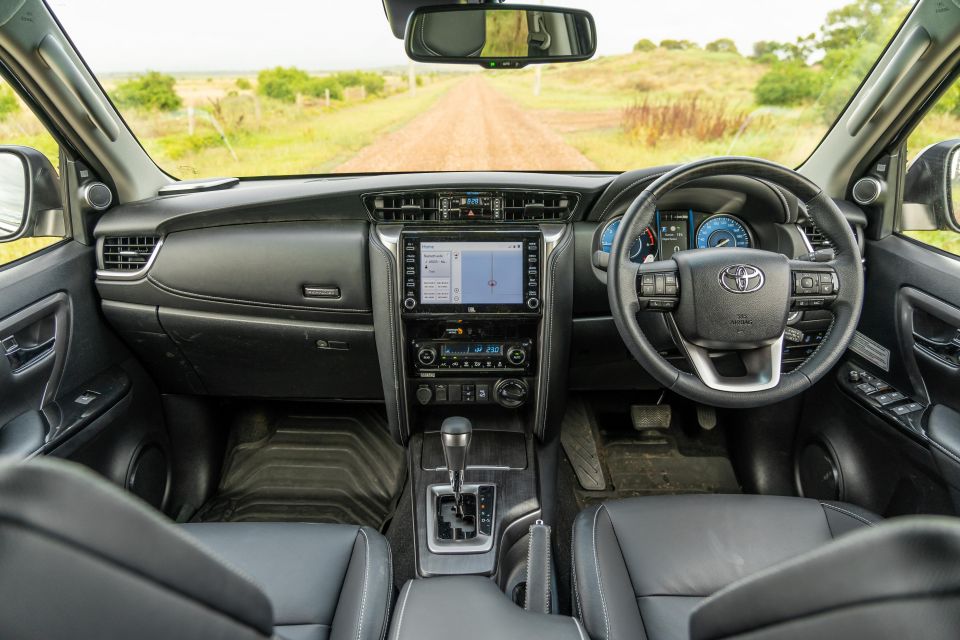
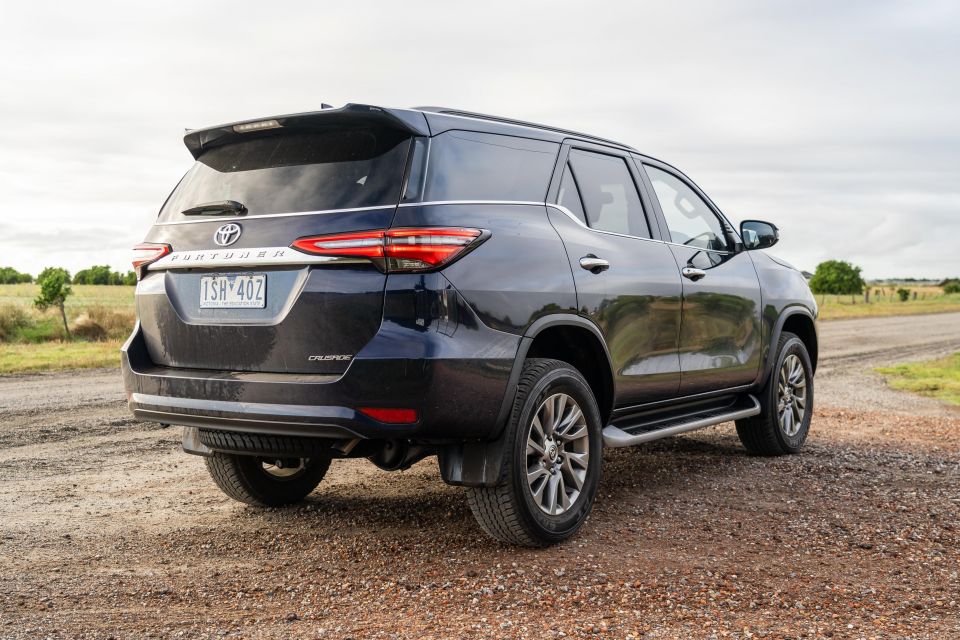
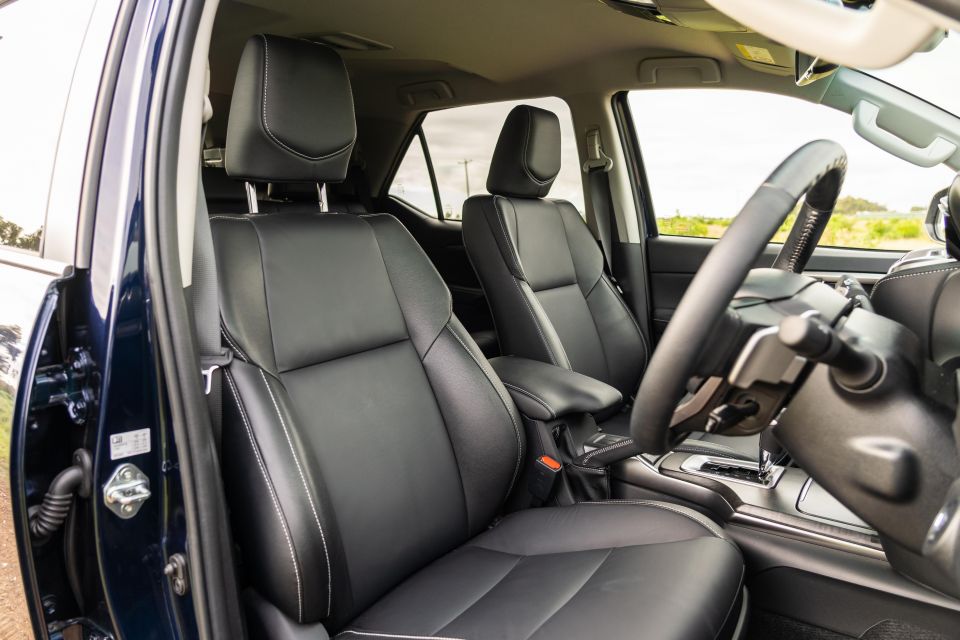
Where expert car reviews meet expert car buying – CarExpert gives you trusted advice, personalised service and real savings on your next new car.
Fortuner Crusade adds:
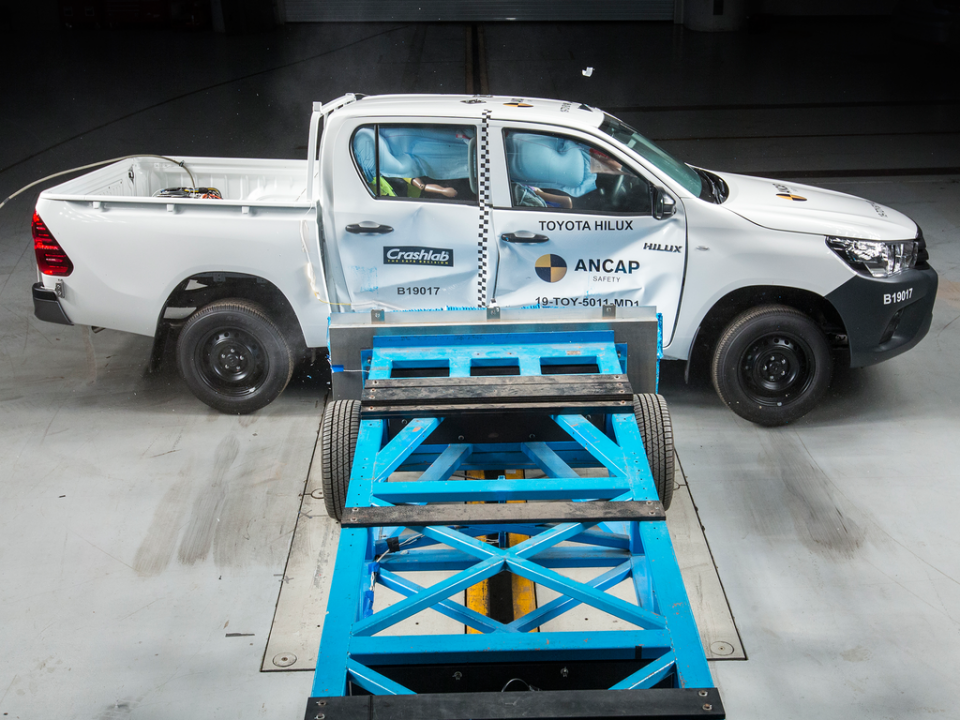
The Toyota Fortuner wears five-star ANCAP safety rating, based on tests conducted on the related HiLux in 2019.
It received scores of 95 per cent for adult occupant protection, 84 per cent for child occupant protection, 88 per cent for vulnerable road user protection, and 78 per cent for safety assist.
Standard safety equipment includes:
Blind-spot monitoring and rear cross-traffic alert are reserved for the Crusade.
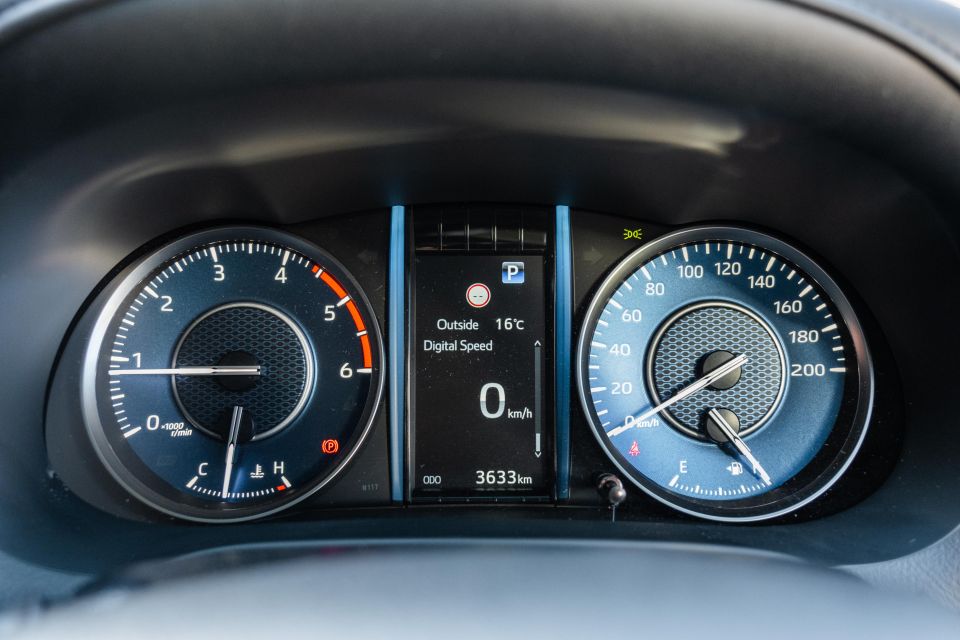
The Fortuner is backed by a five-year, unlimited-kilometre warranty – extended to seven years on the powertrain if you service on time within the Toyota dealer network.
Unfortunately, those services are required every six months or 10,000km. The first three years of maintenance will set you back a combined $1500, at which point Toyota’s capped-price service offer ends.
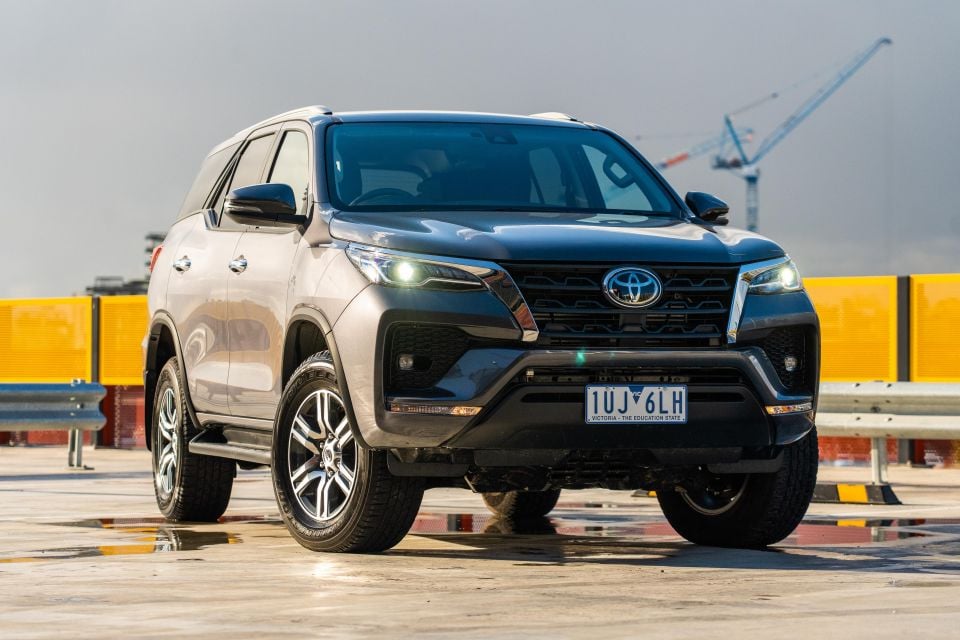
Buy your new car without the stress. It's fast, simple and completely free.

Great service from Travis and team, second time I have used this business would not hesitate to recommend them to anyone
Craig C.
Purchased a Ford Ranger in Sunshine Coast, QLD
CarExpert helped Craig save $7,224 on his Ford Ranger, now let us save you on your next new car.
Get your BEST priceThe Fortuner is a rare miss from Toyota.
There’s no questioning the quality of its underpinnings, nor the appeal of Toyota’s sprawling dealer network, but there are more modern, refined, and comfortable ute-based crossovers out there for similar money.
The interior isn’t as well thought out as it should be, as evidenced by the side-holstered third-row seats, and the fact Toyota withholds blind-spot and rear cross-traffic from the mid-range GXL is disappointing.
As for its strengths? The engine feels muscular, the ride is pretty good on pitted roads, and the aftermarket is brimming with accessories for those who want to make their ride tougher.
If you do have your heart set on a Fortuner, the GXL with Luxury Pack does seem like the smartest buy in the range. It offers the right amount of luxury at the right price alongside the Crusade.
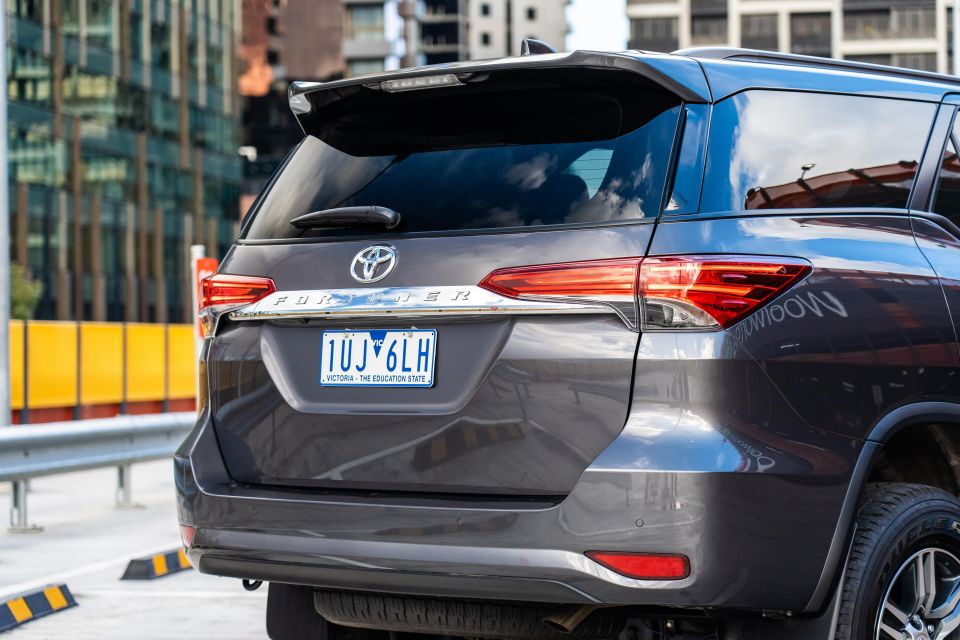
Click the images for the full gallery
Where expert car reviews meet expert car buying – CarExpert gives you trusted advice, personalised service and real savings on your next new car.
Scott Collie is an automotive journalist based in Melbourne, Australia. Scott studied journalism at RMIT University and, after a lifelong obsession with everything automotive, started covering the car industry shortly afterwards. He has a passion for travel, and is an avid Melbourne Demons supporter.


James Wong
5 Days Ago


James Wong
4 Days Ago


Max Davies
3 Days Ago


Josh Nevett
1 Day Ago


Max Davies
1 Day Ago


Damion Smy
12 Hours Ago